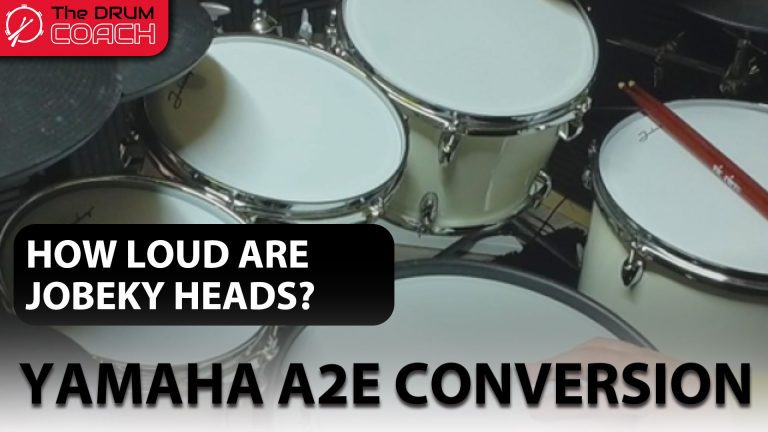There is an erroneous statement that encourages wrong thinking in drumming when it comes to the subject of how to separate limbs. Especially when learning new beats. As well as slower learning. That is the approach to learning a basic drum beat or any other drum rhythm. It is commonly taught that you should divide everything up when it comes to learning a new drum beat or rhythm. This is completely wrong thinking. And although it does get the job done, it is under slight false pretense yet still, in the most part, not intended.
There is a slight erroneous belief that to play a complex drum beat, you have to divide the limbs up. And learn each part of a beat or limb. You then piece everything together. This is the wrong way to go about it. Instead, you should understand that the limbs are already divided. And that is the reason you can’t play the beat in question. It is then your job as the drummer to piece the beat together. Bit by bit, limb by limb, through a process of integration not division.
The Problem With How To Separate Limbs In Drumming
The limbs are already divided which is why you are unable to play a particular drum beat in the first place. My interpretation of this is also slightly flawed because, in the end, you do have to practice one limb at a time. And the process starts from there. Like this:
- Practice the right-hand pattern until you can play it comfortably
- Practice the left-hand pattern until you are comfortable playing that pattern.
- Practice the right and left-hand patterns together until they are comfortable.
- Practice the bass drum pattern until you are comfortable.
- Practice the left foot pattern until you are comfortable.
- Practice the right and left feet together until you are comfortable.
Next,
- Play both hands together until you are comfortable,
- Attempt to add the left foot and play the rhythm until you are comfortable
- Attempt to add the right foot pattern until all 4 limbs are operating in an integrated fashion.
You see, this is a process of integration and not division. And ultimately this is only a matter of perspective to learn a difficult beat or rhythm.
But the distinction is a more productive way to think about drumming. Drumming is in the end a process of integrating the limbs. The four limbs that are in all tense and purposes are already divided.
 You think in a divided way and then move through the processes I suggested. Or, you think in an integrated way and begin to bring the whole rhythm together. So all limbs are flowing, smooth, and even, in an integrated fashion.
You think in a divided way and then move through the processes I suggested. Or, you think in an integrated way and begin to bring the whole rhythm together. So all limbs are flowing, smooth, and even, in an integrated fashion.
The important thing is that you begin to think about integrating the limbs. Rather than dividing. Because the division is already present.
Your job as the drummer is to integrate your limbs into obedience. Which integrates with the bass guitar or rhythm section. Which integrates with the other band members. And produces an integrated smooth flowing piece of music. In other words, you drop division wherever it appears. and wherever you find it.
“Divided we fall, united we conquer“
Play Everything Slow.
The way in which this integrating process succeeds. Is, by first playing and mastering each part until you can piece the whole thing together. When everything is together, to some degree it will remain divided. Until that is, you bring everything into a smooth, cohesive, and fully integrated whole. This is the whole meaning of drumming. Unity and precision.
In other words, when you can play a beat that you’re practicing. You continue to develop it over time.
A Different Approach
Another approach that integrates with the first approach. (This is another layer of the same mentioned process). Is to play everything included on the first note. Followed by everything that’s played on the second note. Then the third, and fourth. A more linear approach.
Let’s take this basic beat as an example.

Using the first process after setting the metronome to around 60BPM, you would;
- Practice the right-hand hi-hat rhythm
- Practice the right foot bass drum rhythm
- Practice the left-hand snare drum rhythm
Followed by:
- Practicing playing the right and left hands together
- Practicing the bass drum and left hand together
- Attempt to put the whole thing together.
If you hadn’t integrated the limbs by this point you would follow the second process:
- Play everything that lands on beat 1 – The right hand and bass drum
- Play everything that lands on beat 2 – The right-hand and left-hand snare drum.
- Play everything that lands on beat 3 – The right hand and bass drum
- Play everything that lands on beat 4 – The right-hand and left-hand snare drum.
You would then follow these two processes until you were able to play the whole thing.
Working To Balanced Toward A Drummer
Drumming is an important (integral) part of many different cultures. It is a way of communicating, a way of expressing emotion, and a way of creating music. And in a sense harmony is at the heart of drumming, music, culture, and so on.
That said, harmony cannot exist where there is imbalance. This is a little deep but still, a valid concept t understand. To be a good drummer, you must have a sense of balance. This means being able to keep a steady beat, but also being able to vary the tempo. Along with the dynamics of the drumming, depending on each situation.
That goal is hindered to the degree that the drummer hasn’t fully integrated what he is playing. And is more able to focus on playing the music in such a way that it comes across as harmonious to the listener. By that, I mean instilling the emotions within the listener that the music intended to pass on. Whether that is an emotional state or to get the listener to dance.
Either way, the goal of the drummer is harmony which is only reached where balance first exists. The balance between the limbs as they flow from the core of the drummer. To then produce the perfect balance of sounds, harmony, or simply a great groove, and so on.
A good drummer will be able to read the mood of the room and adjust their playing accordingly. They will also be able to switch between different rhythms and patterns effortlessly. Thus creating an interesting and dynamic sound that produces the desired effect.
For many people, drumming is not only about making noise, it is about creating a feeling. And connecting with others. Balance is thus essential to creating that perfect drumming experience.
You could go as far as saying that division is the problem that’s solved. On the drummers’ journey through integration. And into harmony to provide the listener with a lasting experience.
If you have any experiences in your own practice sessions I would love to hear about them. Let us know in the comments below and help bring harmony into another drummer’s life.
The Drum Coach




